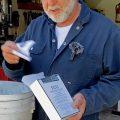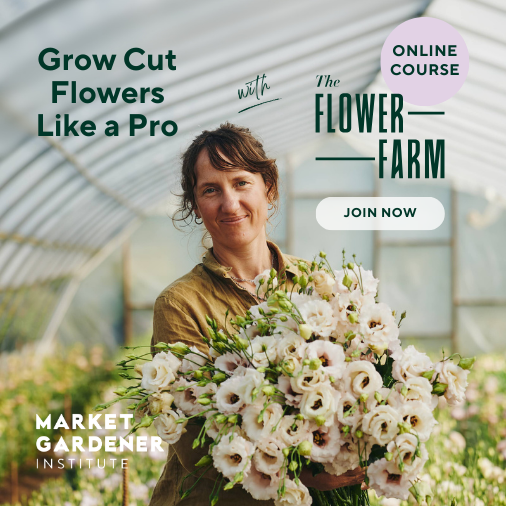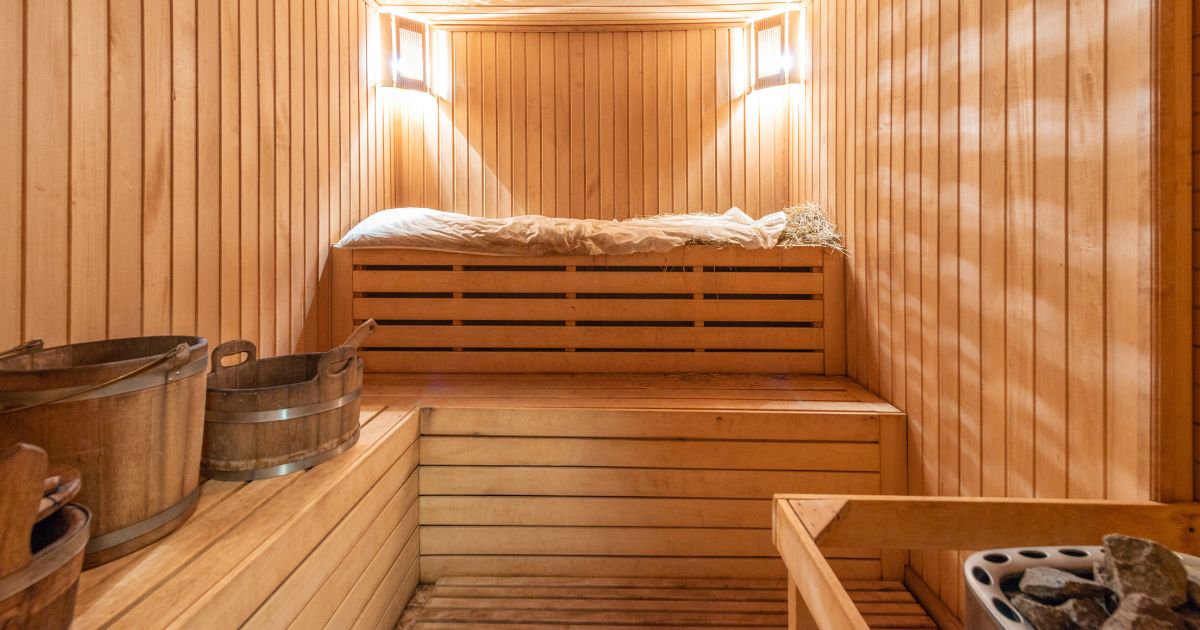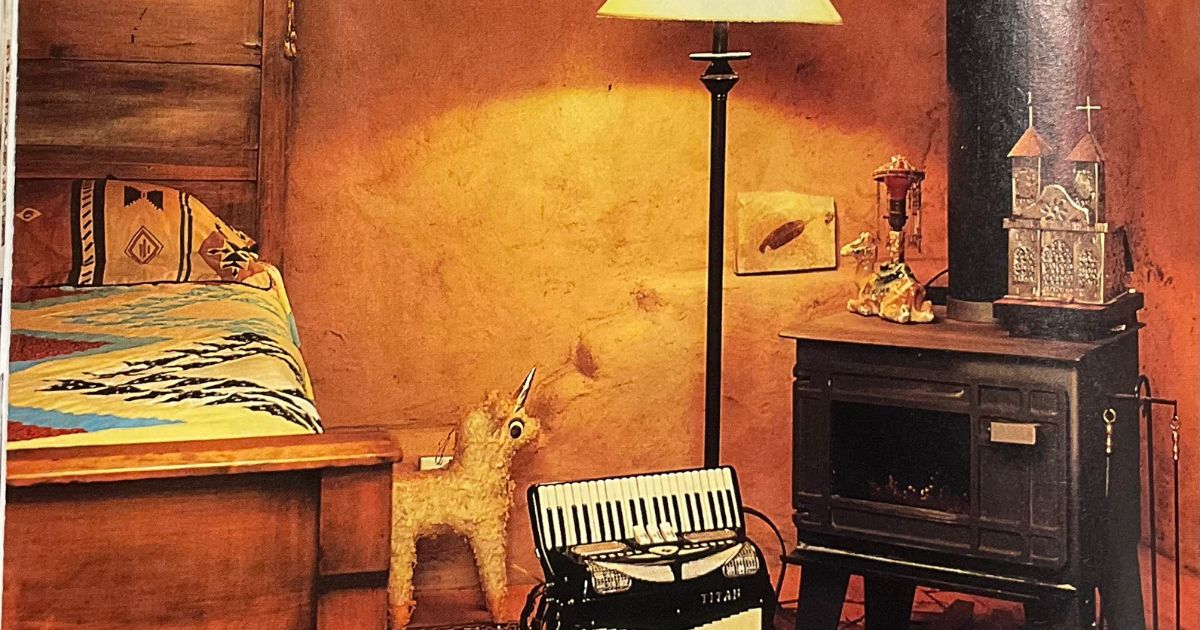Four years and a couple of hundred spoons later, he credits his craft for “literally changing his life.” Harrowsmith caught up with Shawn to learn more about his dedication to his hobby
Harrowsmith: How did you get started?
Shawn Hermans: In the summer of 2019, you would describe me as someone who ‘whittled’ wood while on vacation. But that summer, I came across a book at the library called Spoon, by Barn the Spoon, filled with photos of beautiful spoons. I had never uttered those words before, “beautiful spoons,” as I never knew they existed, but these pictures stirred something inside me. I returned to my workshop that week to turn a few wooden spoons on the lathe. As a wood turner for many years, the idea of creating a large cooking spoon had some appeal, but using the machine, with its vibration and dust, was not the experience that hooked me. It was when I picked up my first carving knife and began to carve my first spoon by hand… that experience of tranquillity, the feel and sound of the wood being carved, combined with quick success, was alarmingly addictive and soon spoon carving was something I started doing daily.
Harrowsmith: Is this a full-time endeavour?
Shawn Hermans: This is a part-time hobby and generally occurs when the kids are with their mother and I’m not at my full-time job as a Recreation Coordinator. My normal work involves coordinating recreation programs, summer, summer camps, and a community hub in Markham, Ontario.
Harrowsmith: How much time do you spend doing this?
Shawn Hermans: A few times per week in the evening and, if I’m lucky, a Saturday or Sunday afternoon.

Right: Shawn uses the spoonmule predominantly to hold the spoon blank while he removes much of the waste wood. He’ll use a Sloyd knife and hook tool for the remaining fine work.
Harrowsmith: How long have you been doing this?
Shawn Hermans: Though I have been woodturning since 2006, spoon carving has been a newer hobby over the last four years. During the pandemic, when much of the commuting time was no longer required, I poured my extra time into spoon carving. The initial work-from-home, Zoom-facing, long, drawn-out meetings were ideal conditions for me to stand a little under the desk and still participate in the discussions, which fueled my progression. I only had to be silenced a couple of times by the host as carving sounds escaped my home office because I’d forget about that dang mute button!
Since then, I’ve filled several ‘buckets’ of spoons. They include cooking spoons, ladles, pocket spoons, and baby spoons. I’ve also been reinspired to turn wooden bowls since I recently invested in my dream lathe — a Canadian-made Oneway 1640 Wood Lathe.
Harrowsmith: What materials are you using? How do you source these materials?
Shawn Hermans: I am fortunate to live in the rural setting of Uxbridge, Ontario, with generous residents often responding to a shout-out for wood on a community Facebook page. They have responded with local walnut, cherry, birch, maple and mulberry, to name a few of my favourites to work with. Perhaps surprising to others is my need for freshly fallen wood as older wood will crack from the ends and would no longer be usable.
Upon hearing the sound of chainsaws in the community, it’s also not uncommon for me to investigate its source. I’ve lost count of the times I have sheepishly asked for a few trimmings as local arborists work in the area.
Harrowsmith: What’s your favourite piece you have created and why?
Shawn Hermans: I enjoy making an object from wood salvaged from someone’s yard. Recreating it into a family heirloom has such deep connections for folks that I’m always excited to take on such projects.
My advice for those looking to donate a limb or log for repurposing, keep it uncut — at least in 5-foot sections so it will keep the inside of the trunk or branch moist and free from cracks. Less than three months old is ideal for carving or turning as the wood is still wet. This enables one to carve any ‘green wood’ quite easily. The older or drier the wood is, the harder it is to carve.

Harrowsmith: What does your craft mean to you?
Shawn Hermans: The craft of spoon carvings literally changed my life and has provided great satisfaction and enjoyment. I was unexpectedly but pleasantly surprised that one of the greatest gifts spoon carving has brought me is the friendships and companionship I’ve gained over the last three years. I owe a tremendous amount of gratitude to the online spoon-carving community. Yes, I said, online spoon carving community. Any search on the internet will quickly show you some beautiful wooden spoons.
The online community also consists of “Rise up and Carve,” a free 24/7 Zoom meeting available to anyone wanting to ‘hook up’ and carve a spoon with another person from another world. This experience of carving with others has been personally satisfying, both socially and for the carving skills I’ve developed. This is like no other Zoom experience I’ve encountered, where people from across the world get together and talk all things wooden spoons. Naturally, the conversation expands, and friendships develop. There are many folks on this Zoom meeting that I now call friends.
I recently had the chance to meet many of these new friends in real life at a few spoon-carving gatherings. These events are often held in beautiful country settings, the most recent being in Caledon, Ontario last fall and in New York State this past summer. Both events brought together a weekend of companionship, camping, socializing and, of course, spoon carving. This was a bucket list opportunity for me to cross off,
and I’m sure to attend again next year.
I’m also honoured to attend a wonderful event in 2023 called Fulcrum Skills Share. It is a land-based gathering where traditional, ancestral and contemporary skills are explored and shared. This multicraft event is held yearly in Bancroft, Ontario and will feature many exciting crafts, including basket making, fire building, storytelling, hedgerow growing, and many more.
The community of those who work with their hands is inspiring and I’m thankful to be part of it.
Harrowsmith: Is there anything you feel is uniquely Canadian about the materials you are using, and if so, what?
Shawn Hermans: I can’t think of anything more Canadian, as all bowls and spoons are sourced from local woods. My favourite woods include walnut, cherry, maple, mulberry and apple. My most favourite spoon is particularly Canadian in nature as it’s made from Canadian Maple, and Tim Hortons’ ground coffee is as
embellishment.
Harrowsmith: Any advice for others who want to follow their creative instincts?
Shawn Hermans: I followed my creative instincts, and it changed my life. In the spring of 2021, after over a year of being isolated by Covid and a strong need/desire to meet other like-minded folks, I set up my carving gear in front of a local gallery in downtown Uxbridge. I met quite a few nice people that day, including my
most favourite person, whom I now call my partner. She turned out to be an artist herself, and we connected immediately. It didn’t hurt that her first reaction to seeing me was, “Oh my god, wooden spoons!” Since then, I’ve met many other folks who have enriched my life with skill-sharing and deep friendships that I will cherish forever.
Harrowsmith: Are you creating your craft to sell to others? If so, how can people contact you to place an order?
Shawn Hermans: Many spoons have made it to friends and family and are now available at some local shops in the Town of Uxbridge, including the Preston Gallery and Passionate Cook’s Essentials. For pictures of recent work, follow me on Instagram @Smiling_Frog_Wood_Studio or visit my website at www.woodgifts.ca.














